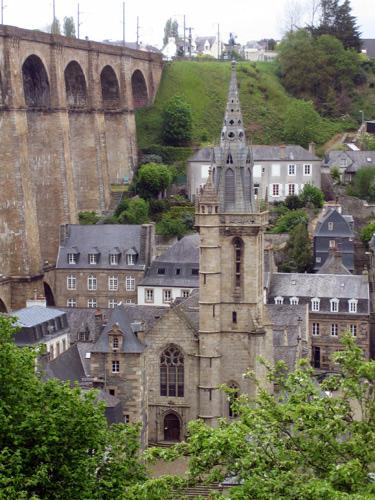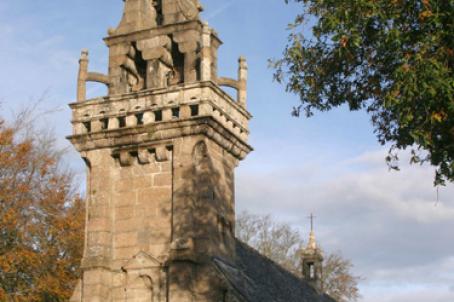Church of Sainte-Melaine
The church of Saint-Mélaine, in flamboyant gothic style (xve century) dedicated to Melaine de Rennes. The priory of Saint-Mélaine was founded between 1149 and 1157 following a donation from Guyomarc'h III, Lord of Morlaix. The church was built at the end of the 15th century by the Beaumanoir workshop of architects. In 1879, the roof lantern of the church was replaced by a wooden spire covered with zinc. The church houses beautiful sandpits and statues from the 15th to the 19th century, as well as a Dallam organ restored in 1971.
About this building
The church with three naves is covered by wooden vaults with sandpit vaults and ornamented entrances. At the southern portal, a font is established on the mullion separating the two doors. The priory on which this church depended was founded between 1149 and 1157. The church, in flamboyant Gothic style, dates from the 15th century. Its "Beaumanoir" bell tower was modified in 1879: a spire replaced the roof lantern. The church houses a 17th century organ, a polychrome wooden altarpiece from the 15th century, an oil on canvas painting of the Holy Family from 1617, statues of St Tugdual in polychrome wood from the 15th century, Saint Yves, Saint Marguerite and, a sculpted group of Saint Anne and the Virgin from the 16th century, Saint Pierre and Saint Mélaine from the 17th century.






